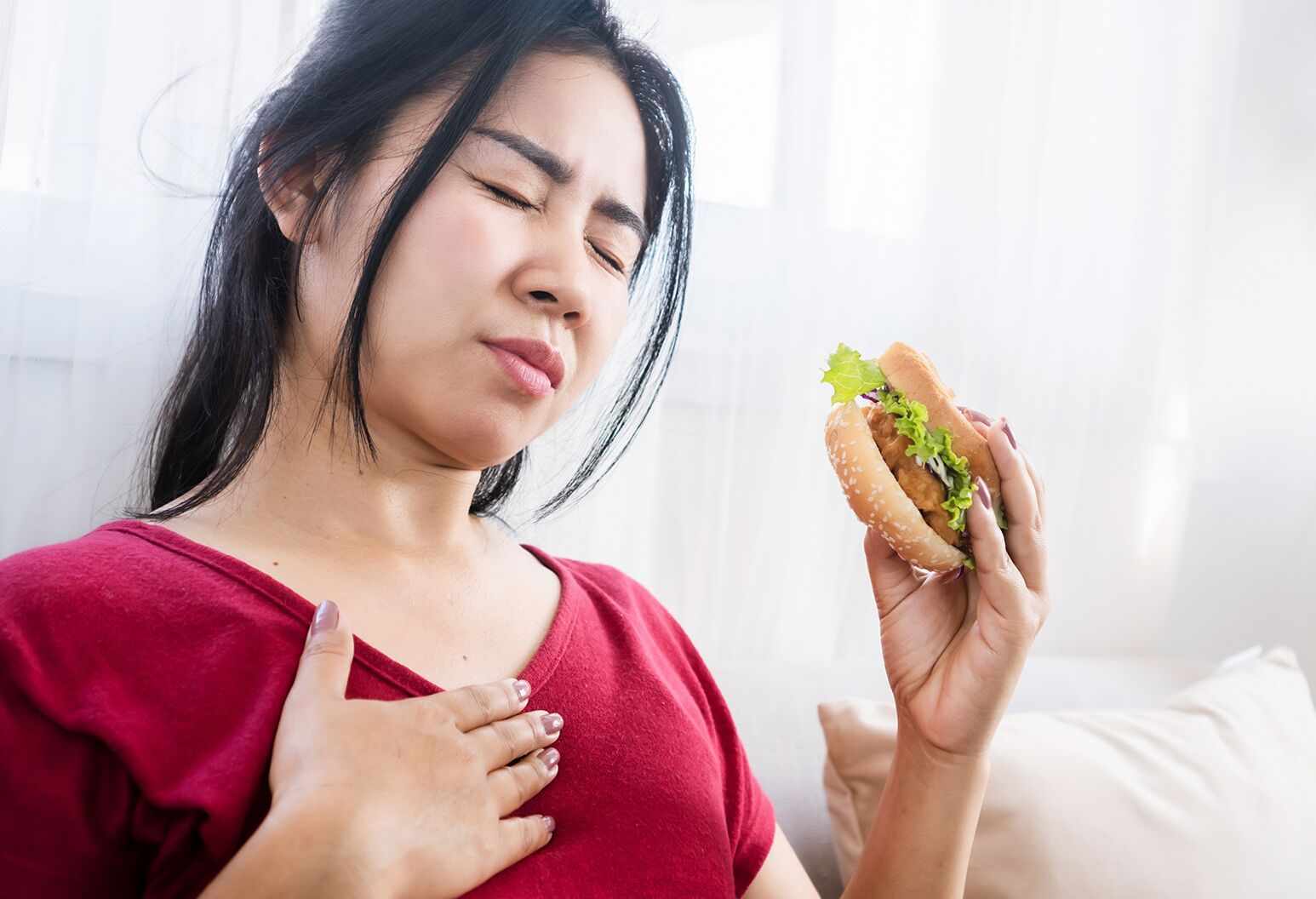
Breathlessness after a meal is not something most people expect. After all, eating should be a comforting experience, not one that leaves you gasping for air. However, for some individuals, this post-meal symptom is a recurring concern that may signal an underlying health issue. Understanding the causes of this sensation can help you take proactive steps toward treatment and improved well-being.
Many people experience shortness of breath after eating, which may result from a variety of health conditions. From digestive issues to heart or lung disorders, breathlessness can arise due to anatomical pressure, food sensitivities, or impaired bodily functions. If this happens frequently, it should not be ignored as just a result of a heavy meal.
1. Gastroesophageal Reflux Disease (GERD)
GERD is one of the most common gastrointestinal issues that can cause post-meal breathlessness. It occurs when stomach acid flows backward into the esophagus, irritating the airway.
Why it causes breathlessness: Acid reflux can cause swelling or spasms in the esophagus, leading to difficulty in breathing or a choking sensation.
Other symptoms: Heartburn, sour taste in the mouth, bloating, and a chronic cough.
Remedies: Avoid spicy and fatty foods, eat smaller meals, and don’t lie down immediately after eating.
2. Food Allergies and Intolerances
Food allergies can trigger immune responses, sometimes affecting the respiratory system.
Why it causes breathlessness: Allergic reactions to food can lead to airway inflammation or anaphylaxis.
Common triggers: Nuts, shellfish, dairy, eggs, and gluten.
Warning signs: Swelling of the lips or tongue, hives, nausea, wheezing, and in severe cases, shock.
Solution: Seek emergency help for severe reactions; get tested for food allergies and avoid trigger items.
3. Hiatal Hernia
This occurs when part of the stomach pushes up through the diaphragm into the chest cavity.
Why it causes breathlessness: The herniated portion of the stomach can press against the lungs, limiting their capacity.
Other symptoms: Acid reflux, difficulty swallowing, and chest pain.
Management: Lifestyle changes like weight loss and smaller meals, and in some cases, surgical repair.
4. Obesity and Overeating
Carrying excess body weight, particularly around the abdomen, can compress the diaphragm.
Why it causes breathlessness: A full stomach after eating increases abdominal pressure, making it harder for the lungs to expand.
Tip: Eat smaller meals, maintain a healthy weight, and avoid carbonated drinks that cause bloating.
5. Asthma and Other Respiratory Conditions
Asthma and chronic obstructive pulmonary disease (COPD) may worsen with certain food triggers or after heavy meals.
Why it causes breathlessness: Inflammation or bronchospasms may be triggered by allergens or reflux post-meal.
Symptoms: Wheezing, chest tightness, and shortness of breath.
Preventive Measures: Avoid known triggers, eat slowly, and manage respiratory conditions with prescribed medications.
6. Cardiac Conditions (e.g., Congestive Heart Failure)
Heart disease can interfere with blood circulation during digestion, especially in people with reduced heart function.
Why it causes breathlessness: After eating, increased blood flow to the digestive tract can strain a weak heart, leading to fluid buildup and breathing difficulty.
Other symptoms: Swollen feet, fatigue, chest pain, and nighttime breathlessness.
Next step: Consult a cardiologist if breathlessness after meals is frequent or worsening.
7. Diaphragmatic Dysfunction
The diaphragm plays a key role in breathing. If it’s weakened or impaired, breathing after eating becomes harder.
Why it causes breathlessness: A full stomach pushes against the diaphragm, reducing lung capacity.
Causes: Nerve damage, trauma, or neurological conditions.
Diagnosis and Treatment: Tests like pulmonary function tests or imaging, followed by physiotherapy or medical intervention.
8. Functional Dyspepsia
This disorder affects the upper digestive tract and causes a range of discomforts after eating.
Why it causes breathlessness: Bloating and gas buildup exert pressure on the diaphragm and lungs.
Other symptoms: Early satiety, nausea, and abdominal pain.
Solutions: Low-fat meals, avoiding caffeine, and eating slowly.
9. Anxiety and Panic Disorders
Some individuals experience anxiety that intensifies after eating, especially in social or stressful settings.
Why it causes breathlessness: Panic attacks can trigger hyperventilation or a feeling of suffocation.
Associated signs: Heart palpitations, sweating, shaking, or dizziness.
Management: Mindfulness, relaxation techniques, therapy, or medications.
10. Poor Posture During or After Meals
Believe it or not, the way you sit while eating can impact your breathing.
Why it causes breathlessness: Slouching compresses the lungs and diaphragm, making it harder to breathe, especially when the stomach is full.
Fix: Sit upright while eating, and stay seated (not lying down) for 20–30 minutes afterward.
When Should You Be Concerned?
While occasional shortness of breath after eating may be harmless, it can also be a red flag for something more serious. Seek medical help if:
Breathlessness is accompanied by chest pain or dizziness.
You feel faint or have a rapid heartbeat.
There is wheezing, swelling, or a known history of allergies.
It happens regularly or worsens over time.
Preventive Tips
If you are prone to shortness of breath after eating, try these lifestyle changes:
Eat smaller, more frequent meals.
Avoid trigger foods like dairy, gluten, or processed items.
Maintain a healthy weight.
Sit upright while and after eating.
Monitor and manage underlying conditions like asthma, GERD, or anxiety.
Stay hydrated and practice mindful eating.
Conclusion
Experiencing breathlessness after meals is not something to take lightly. Whether it stems from digestive disorders like GERD, respiratory issues like asthma, or even anxiety, getting to the root cause is essential. If you notice shortness of breath after eating frequently, don’t ignore it—consult a healthcare provider to rule out or manage any serious underlying conditions. With timely intervention, dietary adjustments, and awareness, this unsettling symptom can often be controlled effectively.






Write a comment ...